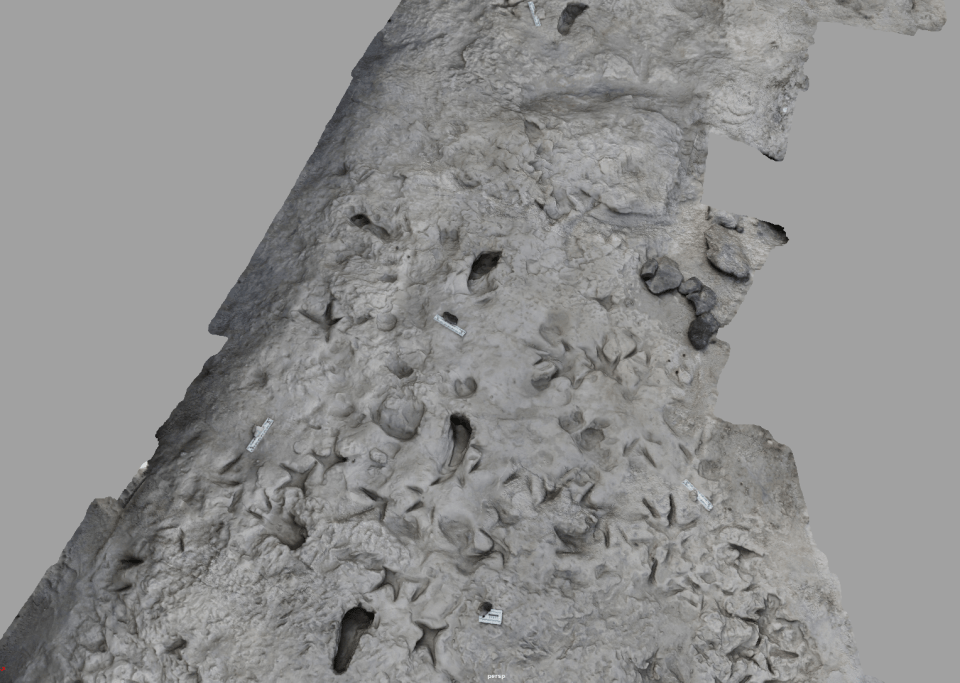Incredible 1.5m-year-old footprints reveal ‘hard proof’ TWO different species of human ancestors had shock encounter
On the same lakeside, two pairs of 1.5 million-year-old footprints from different ancient human species have been found.
Although the coexistence of these ancient human species has long been suspected, scientists now claim that “hard proof” has been found.
Researchers have identified the traces, which were discovered on Kenya’s Lake Turkana, as belonging to the species Paranthropus boisei and Homo erectus.
During the Pleistocene Epoch, these two human species were the most prevalent.
According to Craig Feibel, a professor at the Rutgers School of Arts and Sciences, these human ancestors most likely strolled the shore within hours of one another if they didn’t cross paths.
According to fossil records, these animals—collectively referred to as hominins—coexisted for about three million years.
READ MORE ON ARCHAEOLOGY
The Homo erectus, on the other hand, survived for an additional million years after the Paranthropus boisei eventually died extinct.
Both animals were extremely nimble and moved standing on two feet.
Feibel, another study author, stated that the two species are along the lake’s edge, utilizing the same habitat because they were created on the same surface and in close proximity to one another over time.
Feibel went on to say: This unequivocally demonstrates that not just one, but two distinct hominins were moving across the same terrain, almost within hours of one another.
It may come as no surprise that they lived at the same time. However, this is the first time it has been shown. That’s extremely big, in my opinion.
It is unclear if these species coexisted peacefully or cooperatively.
Gruesome way humans killed 12-ton woolly mammoths in Ice Age finally revealed as scientists squash spear-hunting ‘myth’
The early human species that Homo erectus came into contact with may have feared them or bred with them.
Why Paranthropus boisei did not live another million years while Homo erectus did is a mystery to scientists.
The primary source for researching the evolution of humans is skeletal fossils.
However, Kevin Hatala, the study’s first author, claims that they fall short in providing insights regarding prehistoric human surroundings and behaviors.
Hatala, an associate professor of biology at Chatham University in Pittsburgh who has been studying hominin footprints for more than ten years, stated that fossil footprints are fascinating because they offer striking images that make our extinct ancestors come to life.
We may observe how living beings moved through their environments and possibly interacted with one another or even other animals millions of years ago using this type of data.
“We can’t really obtain that from stone tools or bones.”
Feibel pointed out that fossil footprints—which are classified as “trace fossils”—cannot be relocated either, providing researchers with a more realistic look into the lives of prehistoric people.
When fossil bones were uncovered in the Lake Turkana site in 2021 during a dig led by scientist Louise Leakey, researchers learned about the footprints.
Under the direction of Cyprian Nyete, the field crew began excavating after seeing fossils on the surface.
Read More on The US Sun
Richard Loki, one of the excavators, discovered some enormous bird tracks while removing the fossils from the top layer of a bed.
In July 2022, Leakey organized a team to excavate the footprint surface after he identified the first hominin footprint.
Note: Every piece of content is rigorously reviewed by our team of experienced writers and editors to ensure its accuracy. Our writers use credible sources and adhere to strict fact-checking protocols to verify all claims and data before publication. If an error is identified, we promptly correct it and strive for transparency in all updates, feel free to reach out to us via email. We appreciate your trust and support!















